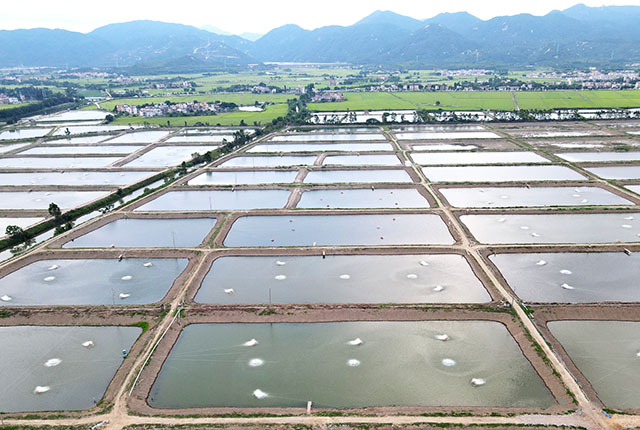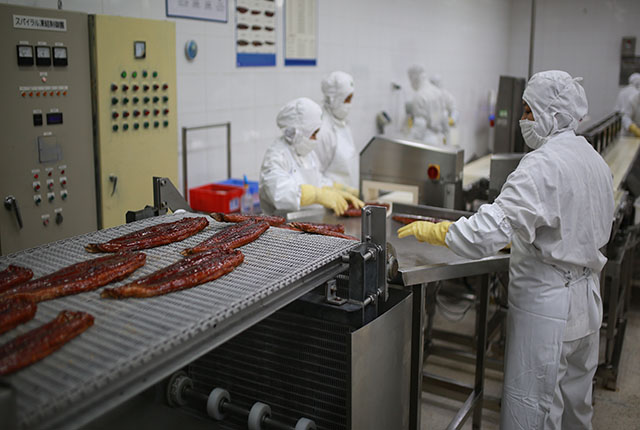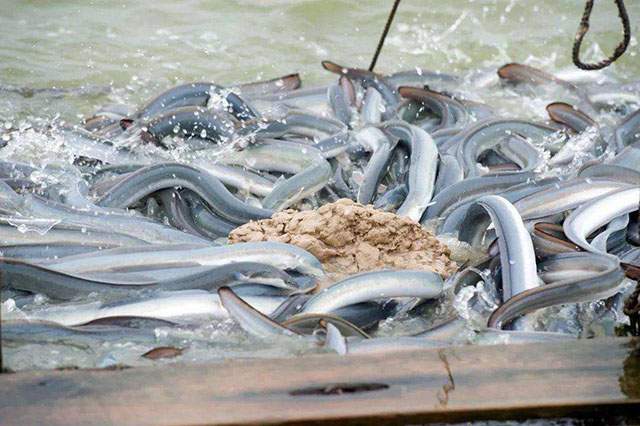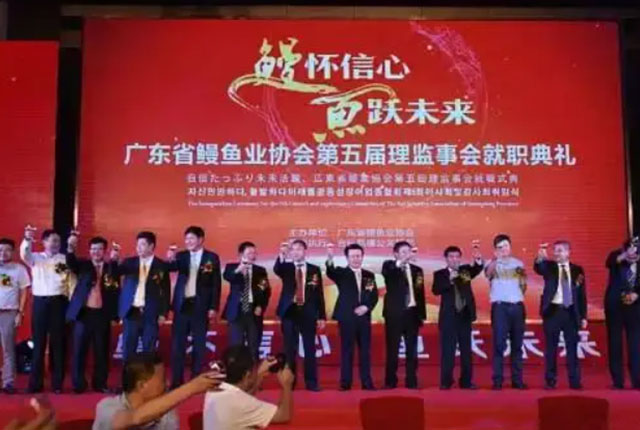Do you think eels are most common in Japan? NO! The Japanese love eels, with a population of nearly 130 million consuming more than 70,000 tons a year. They can no longer meet their needs with locally produced eels, many of which are imported from China.
Here, we have to mention Shunde, guangdong province, known as the "hometown of Chinese eels". Guangdong Shunde has an aquaculture area of more than 216,000 mu and an eel farming area of 75,000 mu, with an annual output of about 55,000 tons and an output value of 2.2 billion yuan. It is the largest eel breeding, processing and export base in China, accounting for one-fifth of the country's export and export of eel products.

Among them, RenHai village is the representative of Shunde eel. Renhai village as a village-level unit, its eel production accounted for half of Shunde, 33% of Guangdong, 10% of the country, annual output value of 2.9 billion yuan! In 2018, RenHai village was officially named the first eel village in China
The eels from RenHai are exported to other parts of the world
RenHai eels are sold not only to large and medium-sized cities in China, but also to more than 30 countries and regions including Japan and the European Union. Many eels on Japanese tables come from RenHai.
Today, RenHai not only farms eels, but has also perfected the local eel industry chain, turning RenHai's eels into highly processed, high-value roasted eel products. Today, RenHai has evolved from a single eel to a highly processed end product.

One example is the eel roasting factory set up by eel farmers in RenHai. At present, the grilled eel factory has formed more than ten kinds of grilled eel products, such as kabayaki eel, shirayaki eel, eel sushi topping, eel skewer and so on.
Each live eel goes through at least 12 processes, such as processing, and in just 90 minutes, the eel is screened, roasted and sold.
In the 1980s, the people of RenHai saw a business opportunity in eels
Renhai village is located in a small village near shunde waterway, a tributary of the North River. There are more than 4000 mu of fish ponds in the village, which used to be the most typical mulberry fish ponds in Shunde.
In the mid-1980s, an agent came to the village to sell eel seedlings, so some villagers took a chance and started raising eels.
Since eels were raised in cement ponds in other parts of the world, could mud ponds produce commercial fish? No one knows for sure. In order to give it a try, the eel farmer of RenHai conducted an experiment of raising eels in the original fish pond.
In the end, everything paid off. With the efforts of the villagers, eel farming in the mud pond was very successful! The bold and innovative People of RenHai created the first eel farming in Korea and harvested the first pot of gold brought by eels.

Driven by successful farming demonstrations, the villagers of RenHai began to follow suit. At peak times, nearly 80 percent of the village's 4,000 mu of fish ponds were farming eels. A single spark can start a prairie fire. It wasn't long before eels were raised in neighboring towns, and the whole of Shunde became a craze for eel farming.
The road to eel farming, however, has not been smooth.
In 1995-1996, Shunde eel suffered a serious crisis, which caused the export price of eel to drop from 160-170,000 yuan per ton to as low as 25,000 yuan.
Originally, as the whole Shunde began to raise eels crazily, the breeding scale grew too fast, and the market supply exceeded demand, leading to the price of eels plummeted. From 1997 to 2000, it was common for a farm company to lose hundreds of millions of yuan, and the whole industry suffered serious losses.
Later, people reflected on this crisis and found that the root causes were as follows: first, the domestic eel sales market had not yet been developed, and exports only depended on the Japanese market, which was relatively single; Second, the lack of organization and coordination management within the industry, resulting in breeding enterprises to fight against each other, a downturn in the market, everyone regardless of the cost of crazy selling, resulting in a panic collapse of the market.
Establishment of the Eel Association
In 2002, the Eel Association was formally established to build a "bridge" for breeding enterprises, distribution enterprises and sales market, turning the original "scattered sand" into an "indestructible" group.
The eel Association covers a variety of industrial chains, including seedling cultivation, breeding, bait production, deep processing and export. Every year, the association will specially invite aquaculture experts for the association members to do training, to help you improve the level of aquaculture.

After the eel seedling production starts at the end of November to the beginning of December every year, the association will also help members collect information from all sides, tell them the situation of the seedling this year, help them predict whether there is a good harvest or a bad harvest, and let members rationally and in a planned way to invest in the seedling, instead of rushing to grab the seedling and control the cost of the seedling investment.
At the same time, the association also irregularly informs members of the international eel market to help them understand the market so that they can minimize the risks of farming.
By 2007, Shunde had developed into an eel industry chain with complete supporting facilities such as seedling cultivation, breeding, processing, sales, feed and additives. According to statistics, live eels exported from Shunde accounted for more than 80 percent of the country, and roasted eels accounted for more than 30 percent.
In 2009, Shunde was named the "Eel Hometown of China".